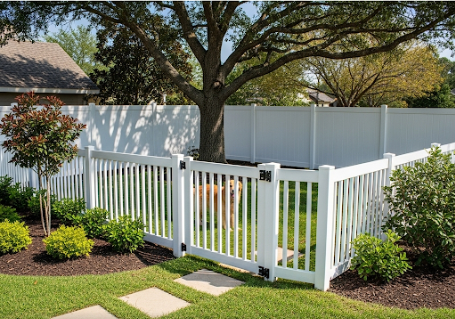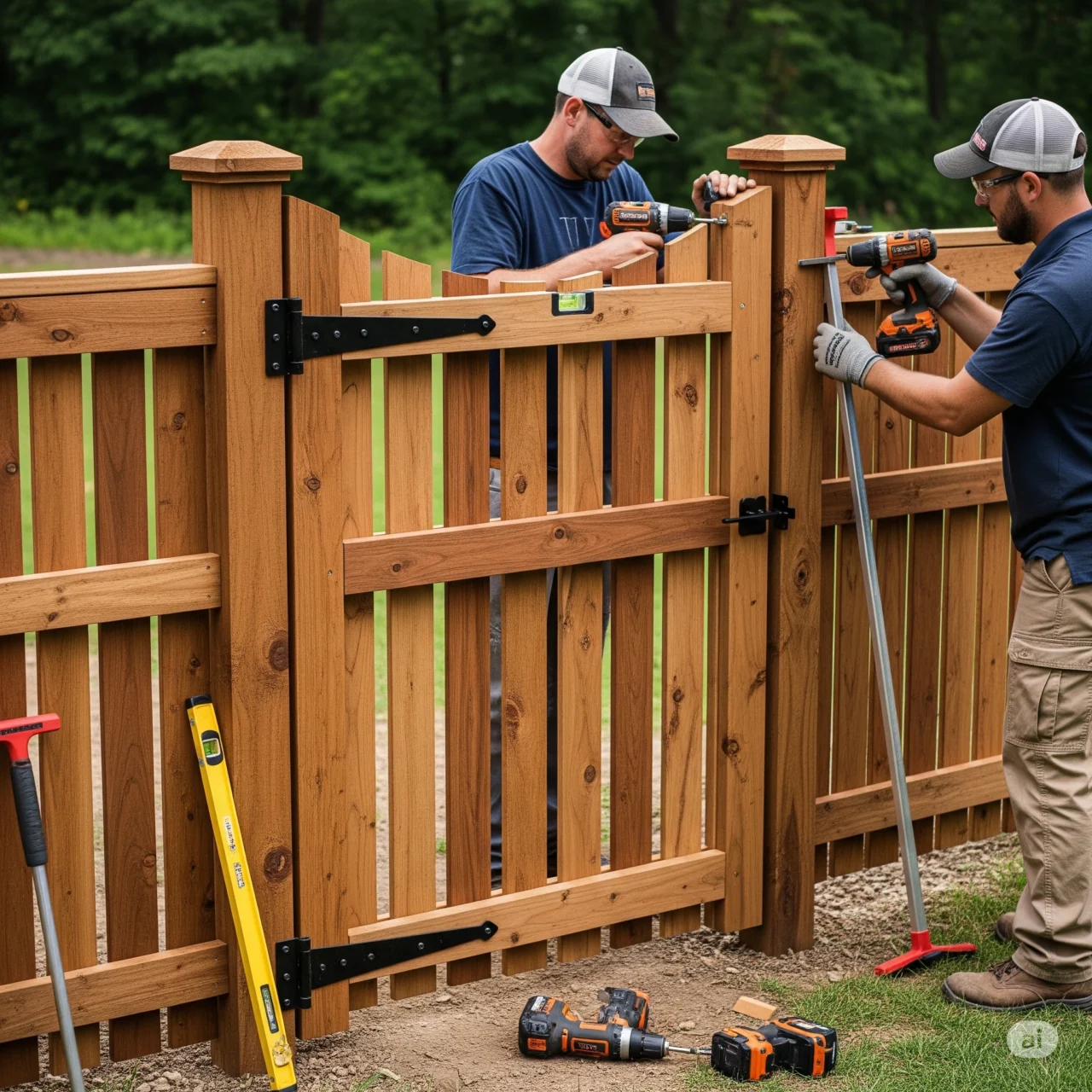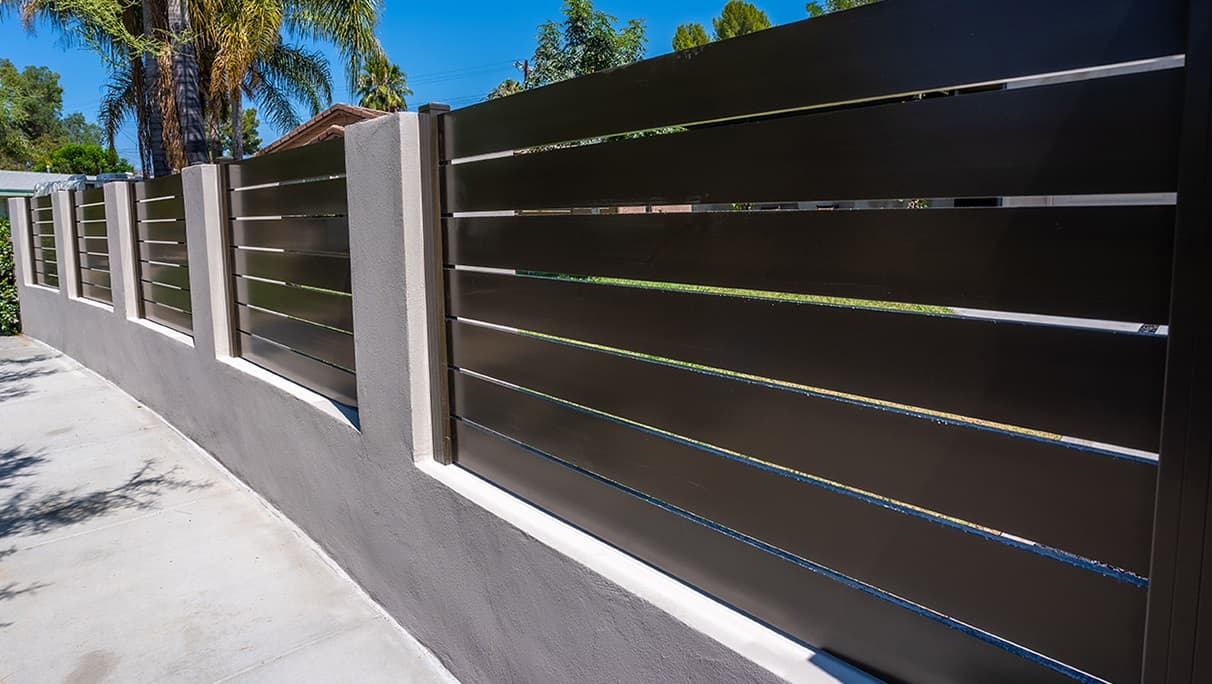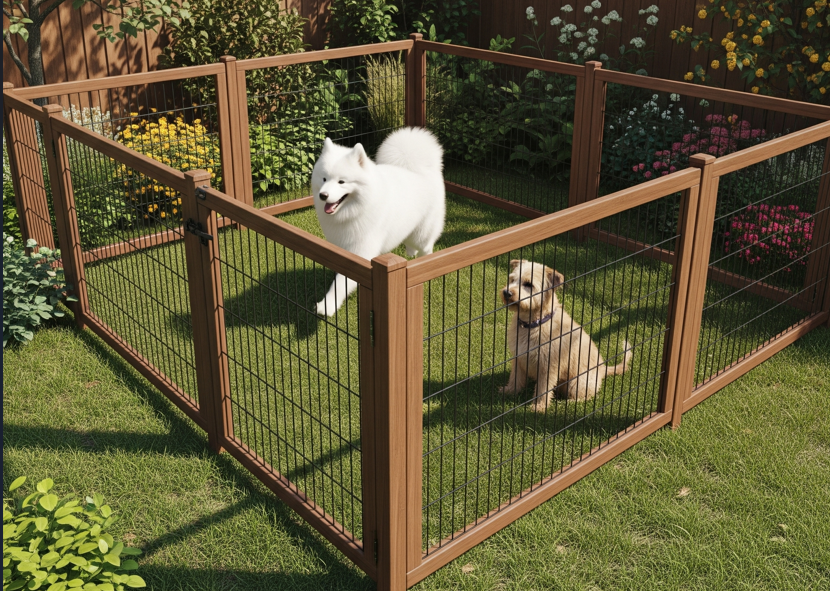For dog owners, ensuring the safety and happiness of their furry companions is a top priority. A well-designed dog fence provides a secure environment for your pets to play and explore while giving you peace of mind. At Super Fabrications, we specialize in dog fence installation services that combine functionality, durability, and style. Serving Fairfax County, Fairfax City, Loudoun County, Alexandria, Arlington, and Maryland, our expert team delivers tailored fence installation services to meet your needs.
In this blog, we’ll explore the benefits of dog fences, the types we offer, and why Super Fabrications is your trusted partner for creating a safe space for your dogs.
Why Invest in a Dog Fence?
A dog fence is more than just a boundary—it’s an essential tool for keeping your pets safe and your property looking great. Here are the key reasons to invest in a dog fence:
-
Safety and Security: A sturdy fence prevents your dog from wandering into dangerous areas like busy roads or neighboring properties.
-
Freedom to Play: Dogs need space to run, play, and exercise. A dog fence creates a secure area for them to enjoy without constant supervision.
-
Property Protection: A fence helps protect your garden or landscaping from your dog’s enthusiastic digging or exploring.
-
Enhanced Curb Appeal: A well-designed fence adds aesthetic value to your property, boosting its overall appeal.
-
Peace of Mind: Knowing your dog is safe allows you to relax, whether you’re at home or away.
At Super Fabrications, our dog fence installation services are customized to suit your dog’s needs and your property’s style, ensuring both safety and beauty.
Types of Dog Fences Offered by Super Fabrications
We offer a variety of dog fence options to accommodate different breeds, property sizes, and aesthetic preferences. Here’s a look at our top choices:
1. Vinyl Dog Fences
Vinyl fences are durable, low-maintenance, and perfect for dog owners. Their smooth surfaces prevent splinters, and their strength ensures they can handle even the most energetic dogs.
-
Benefits: Weather-resistant, easy to clean, and available in various styles and colors.
-
Best For: Dog owners seeking a low-maintenance, long-lasting fence.
2. Wood Dog Fences
Wood fences offer a classic, natural look that complements any property. We use high-quality cedar or pressure-treated pine to create sturdy fences that keep dogs secure.
-
Benefits: Customizable, affordable, and aesthetically pleasing.
-
Best For: Homeowners who want a traditional, warm appearance.
3. Aluminum Dog Fences
Aluminum fences provide a sleek, modern look with excellent durability. Their open design allows visibility while keeping dogs safely contained.
-
Benefits: Rust-resistant, low-maintenance, and stylish.
-
Best For: Properties where visibility and modern aesthetics are priorities.
4. Chain Link Dog Fences
Chain link fences are a cost-effective, durable option for large yards or active dogs. They’re strong enough to withstand rough play and provide ample space for your dog to roam.
-
Benefits: Affordable, durable, and easy to install.
-
Best For: Budget-conscious dog owners with large properties.
5. Custom Dog Gates
We complement our dog fences with custom gates to ensure secure access points. These gates are designed to match your fence and accommodate your dog’s size and behavior.
-
Benefits: Tailored to your property’s layout and your dog’s needs.
-
Best For: Homeowners seeking a complete, cohesive fencing solution.
Why Choose Super Fabrications for Dog Fence Installation?
At Super Fabrications, we’re dedicated to delivering exceptional fence installation services with a focus on quality, safety, and customer satisfaction. Here’s what makes us stand out:
1. Tailored Consultation
Our process begins with a personalized consultation to understand your dog’s behavior, your property’s layout, and your aesthetic preferences. We consider factors like your dog’s size, energy level, and digging tendencies to recommend the best fence type. We also handle local regulations in Fairfax County, Alexandria, Arlington, and Maryland, securing necessary permits.
2. Premium Materials
We use high-quality materials, including durable vinyl, cedar, aluminum, and galvanized steel, to ensure your dog fence is built to last. Our materials are chosen for their strength, weather resistance, and pet safety.
3. Professional Installation
Our skilled team installs your dog fence with precision, using advanced tools to ensure a secure, level structure. We complete most projects efficiently, often in a single day, minimizing disruption to your routine.
4. Flexible Financing
We offer financing options to make your dog fence installation affordable. Contact us to explore payment plans that fit your budget.
5. Exceptional Customer Service
Our commitment to customer satisfaction is evident in reviews from clients who praise our professionalism, responsiveness, and ability to deliver high-quality fences at competitive prices.
The Super Fabrications Installation Process
Our dog fence installation services follow a streamlined process to ensure a hassle-free experience:
-
Consultation: We visit your property to assess your needs, measure the area, and provide a detailed quote.
-
Custom Design: We design a fence that suits your dog’s needs and matches your property’s aesthetic, ensuring compliance with local regulations.
-
Material Procurement: We source high-quality materials tailored to your specifications.
-
Installation: Our team installs your fence with precision, ensuring durability and a polished finish.
-
Final Walkthrough: We inspect the completed fence with you to ensure it meets your expectations and keeps your dog safe.
This process guarantees a dog fence that’s both functional and visually appealing.
Dog Fences vs. Invisible Fences
When choosing a dog fence, you may consider traditional fences versus invisible (electric) fences. Here’s a comparison to help you decide:
-
Traditional Dog Fences: These include vinyl, wood, aluminum, and chain link fences. They provide a physical barrier, enhance property aesthetics, and are suitable for all dog sizes and temperaments. They require minimal maintenance and offer long-term durability.
-
Invisible Fences: These use a buried wire and a collar to create a boundary. They’re less expensive upfront but require training and may not be suitable for all dogs, especially those sensitive to corrections or prone to escaping.
At Super Fabrications, we recommend traditional dog fences for their reliability, aesthetic appeal, and ability to physically contain dogs of all breeds and behaviors.
Maintenance Tips for Dog Fences
To keep your dog fence in top condition, follow these maintenance tips:
-
Regular Inspections: Check for loose panels, posts, or hardware, especially after storms or rough play.
-
Cleaning: Wash vinyl and aluminum fences with mild soap and water; clean wood fences to prevent mold.
-
Wood Fence Care: Apply sealant or stain every 2–3 years to protect wood fences from rot and weathering.
-
Gate Maintenance: Lubricate hinges and check latches to ensure smooth operation.
Our team is available to provide maintenance advice or repair services to keep your fence secure and looking great.
Customer Success Stories
Our clients’ feedback reflects the quality of our dog fence installation services:
-
Emily from Loudoun County: “Super Fabrications installed a wood dog fence for our two labs. It’s sturdy, looks fantastic, and keeps our dogs safe. The team was professional and fast!”
-
Tom from Alexandria: “We needed a pet-friendly aluminum fence, and Super Fabrications delivered a beautiful solution that fits our yard perfectly. Highly recommend!”
These stories highlight our dedication to quality and customer satisfaction.
Serving Fairfax, Alexandria, Arlington, and Maryland
Super Fabrications proudly serves Fairfax County, Fairfax City, Loudoun County, Alexandria, Arlington, and Maryland. Our expertise in local regulations ensures a smooth installation process, whether you’re in a bustling urban area or a quiet suburb.
Why Dog Fence Installation is Essential for Pet Owners
A dog fence is an investment in your pet’s safety and your property’s value. At Super Fabrications, we’re committed to delivering dog fence installation services that provide security, durability, and style. Our focus on quality materials, expert craftsmanship, and outstanding service makes us the premier choice for fence installation services in the region.
Contact Super Fabrications Today
Ready to create a safe, stylish space for your dog? Contact Super Fabrications for a free consultation. Our team is here to guide you through every step, from design to installation. Visit superfabrications.com or call us to learn more about our dog fence installation services and financing options. Let us help you give your dog the freedom to play safely.
⭐⭐⭐⭐⭐ The fence installation was fast and flawless. – Lisa T.
Read more reviews





